Southern-Style Buttermilk Biscuits
This post may contain affiliate links. Read my full disclosure policy.
Bring a touch of Southern warmth to your table with a basket of rich and flaky buttermilk biscuits—these feature a secret ingredient that makes them next-level tender.
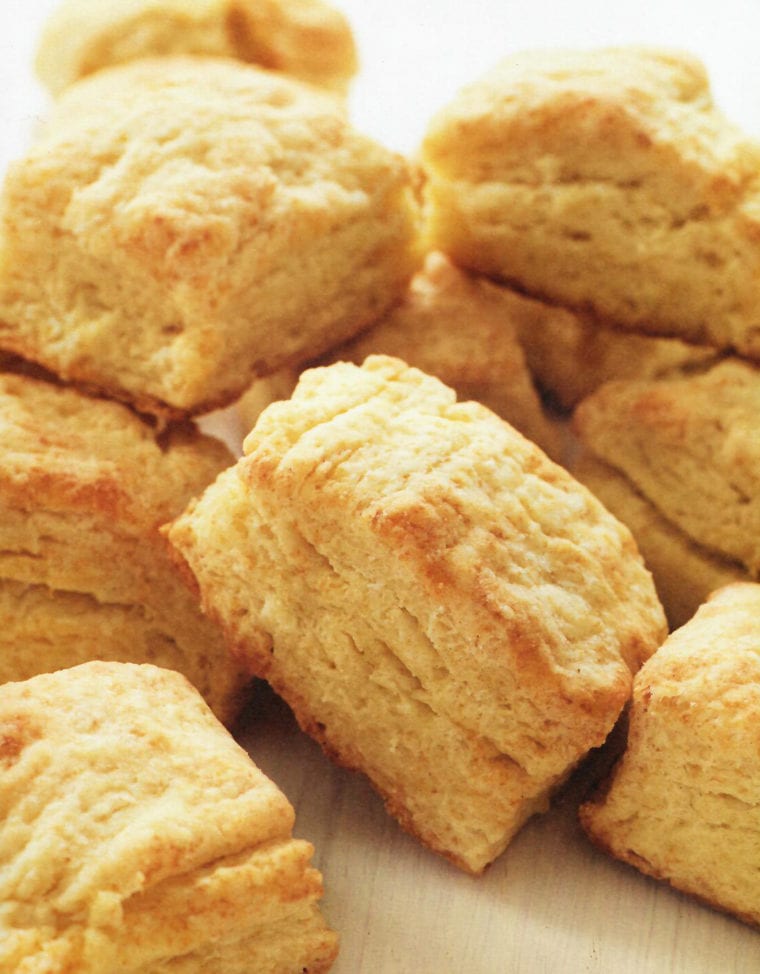
Photo by Alexandra Grablewski (Chronicle Books, 2018)
Southern buttermilk biscuit recipes typically call for White Lily flour, a low-protein brand primarily available in the southern states that makes for ultra-tender, melt-in-your-mouth biscuits. I can’t find White Lily flour easily where I live, so I use a blend of all-purpose flour and cornstarch to get a similar effect. These buttermilk biscuits are rich, buttery, and flaky with a toasty golden crust. Plus, they’re easy to make. You can throw the dough together in 15 minutes and end enjoy the biscuits with your dinner less than fifteen minutes later.
These are traditional roll and cut biscuits. However, instead of using a biscuit cutter, I cut my biscuits into squares—it’s easier as you don’t have to deal with any scraps, plus, who says biscuits have to be round?! For an even simpler drop-and-bake method, see my recipe for drop biscuits.
Table of Contents
“These are amazing. Came together quickly for breakfast. My husband took a bite and gave me a high five. They’ll be a staple around here.”
What You’ll Need To Make Buttermilk Biscuits
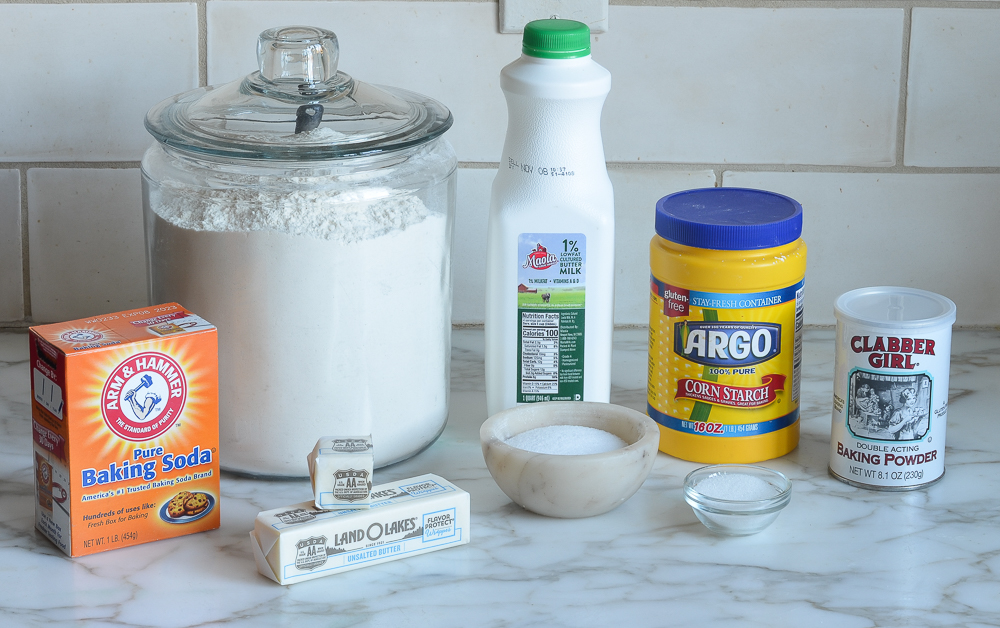
- All-purpose flour: Provides the structure for the biscuits by forming gluten when mixed with liquid. Use the spoon-and-level method to measure to ensure accuracy.
- Cornstarch: Softens the dough’s proteins to produce a more tender biscuit.
- Baking powder and baking soda: Leavening agents that work together to create rise and fluffiness in the biscuits. Baking soda also reacts with the acid in buttermilk, aiding in leavening and improving color.
- Sugar: Adds a slight sweetness to balance the flavors and aids in browning.
- Cold butter: Provides fat which, when cut into the dry ingredients, creates flaky layers as it melts during baking. The cold temperature is crucial for achieving the desired flakiness.
- Buttermilk: Adds acidity that reacts with the baking soda for leavening, contributes to the biscuits’ tender crumb, and imparts a slight tanginess. If you don’t want to buy a whole carton, see my instructions for how to make buttermilk using milk and lemon juice or vinegar.
- Jump to the printable recipe for precise measurements
Step-by-Step Instructions
Begin by combining the flour, cornstarch, baking powder, baking soda, sugar, and salt in a food processor.
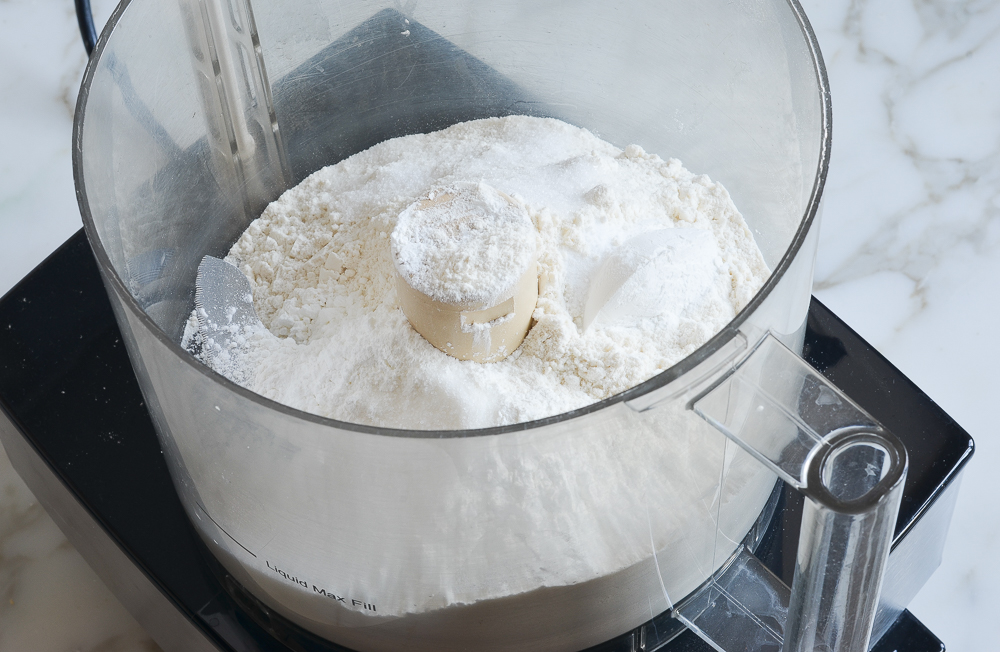
Pulse briefly to combine.
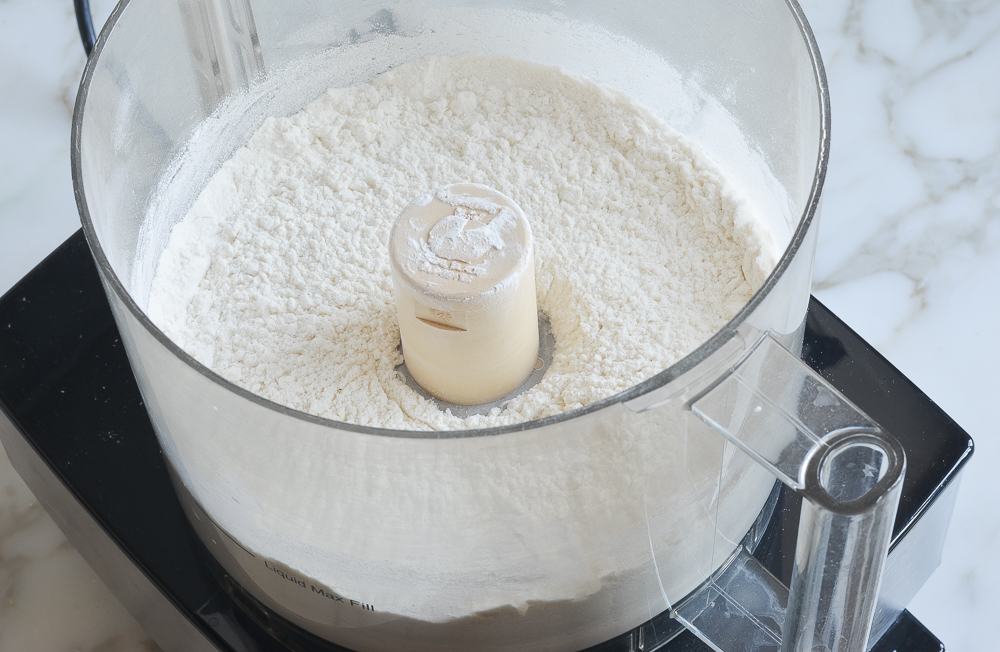
Add the cold chunks of butter.
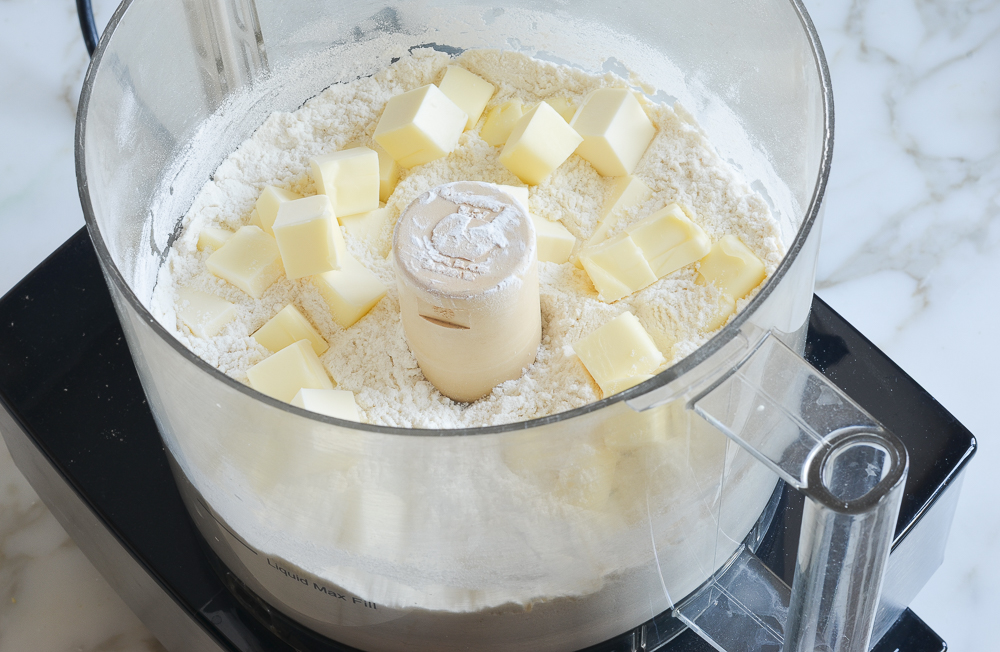
Pulse until the mixture resembles coarse sand with a few pea-size clumps of butter intact.
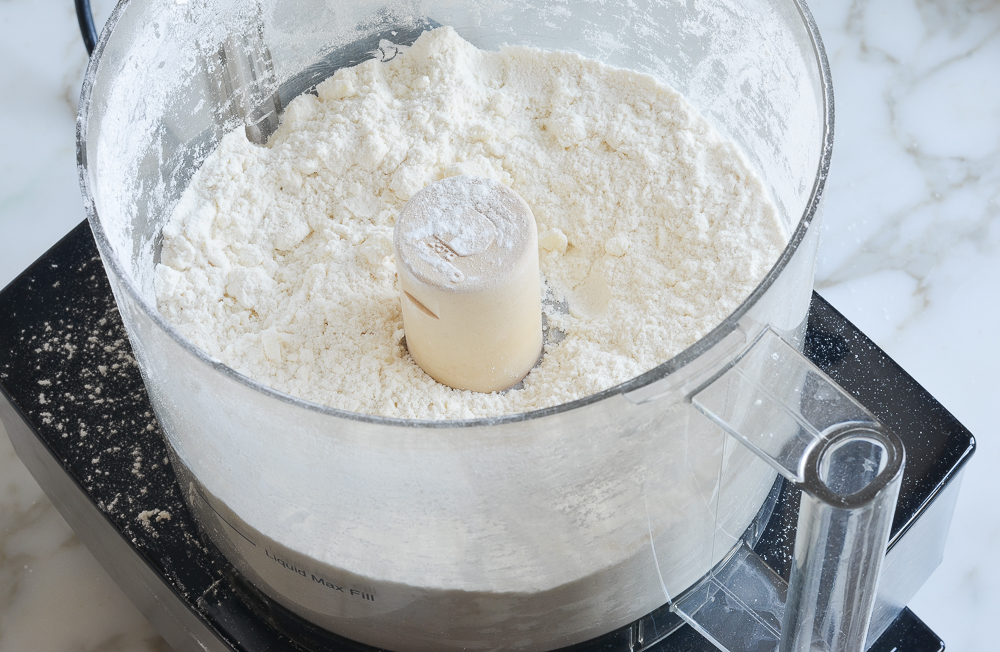
Transfer the mixture to a bowl.
Add the buttermilk.
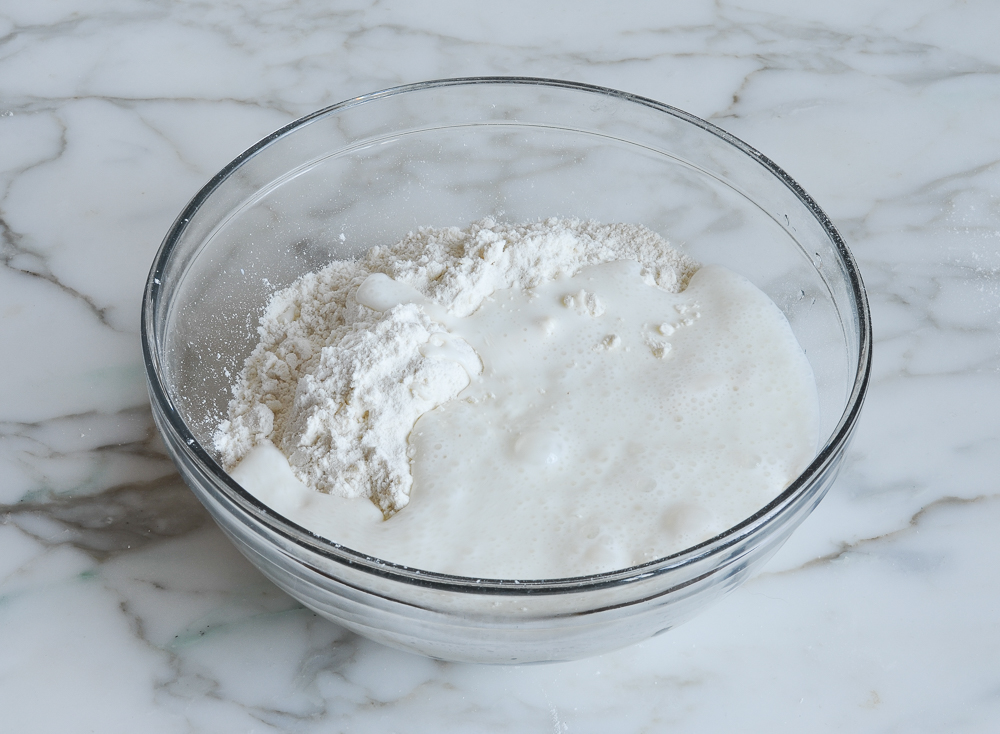
Stir until the mixture comes together into a shaggy mass.
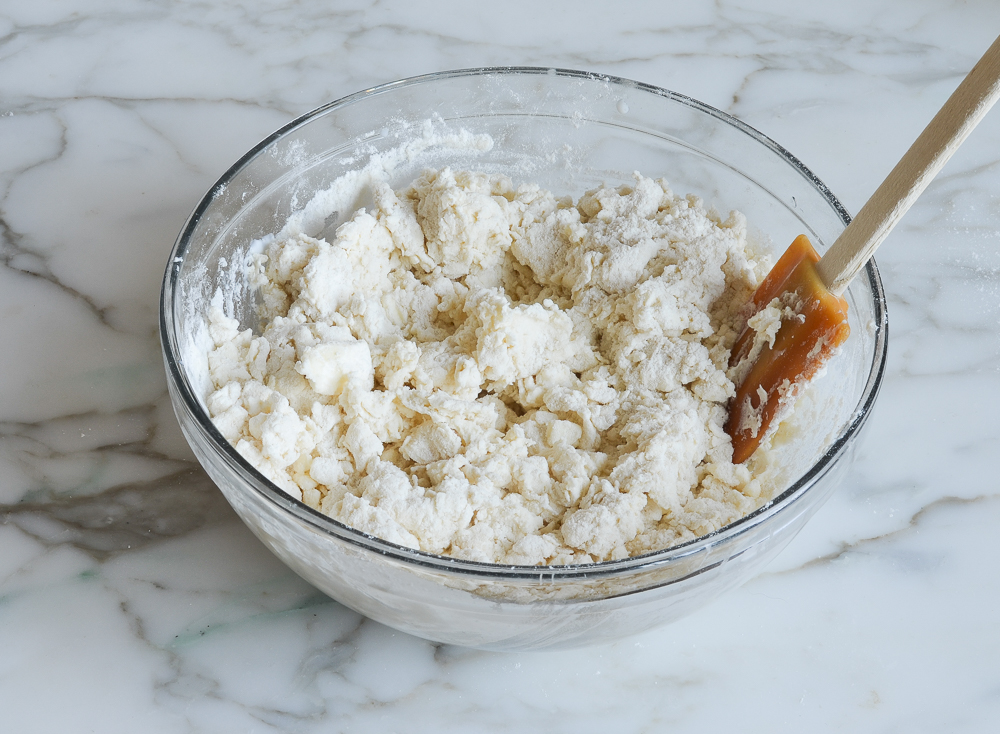
Turn the dough out onto a lightly floured work surface and bring together into a loose ball.
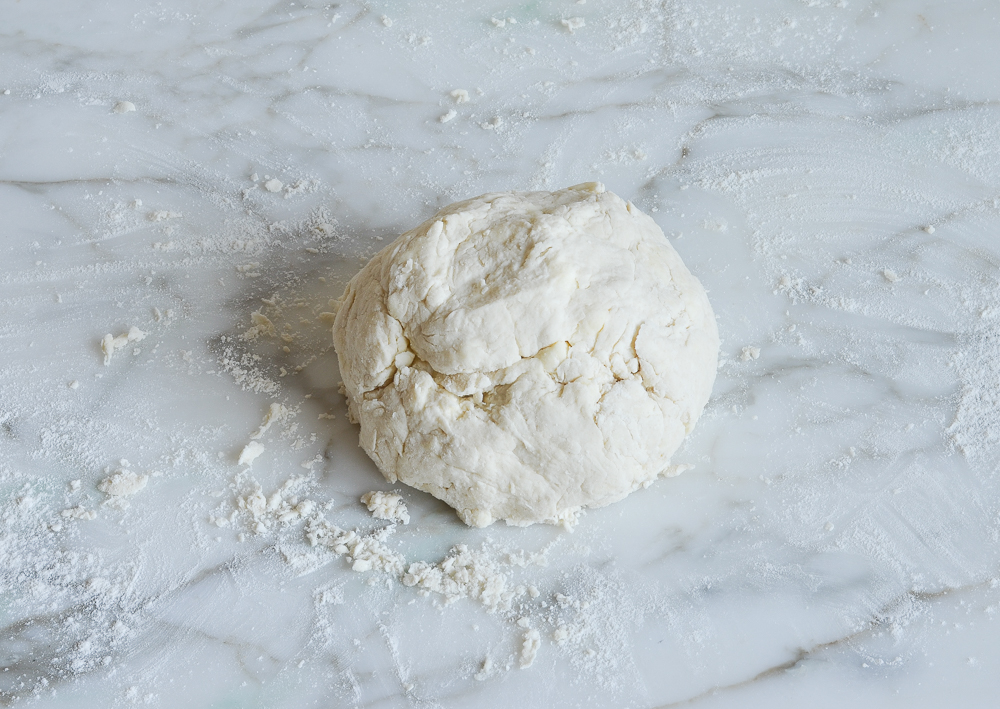
Gently pat the dough into a rectangle about 3/4 inch thick.
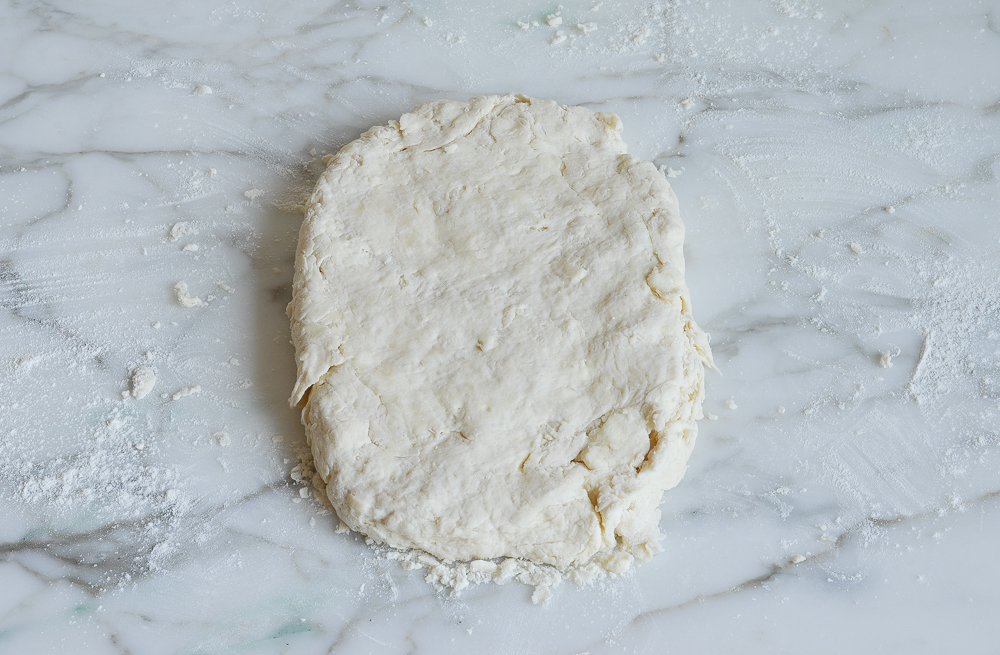
Cut the dough in thirds.
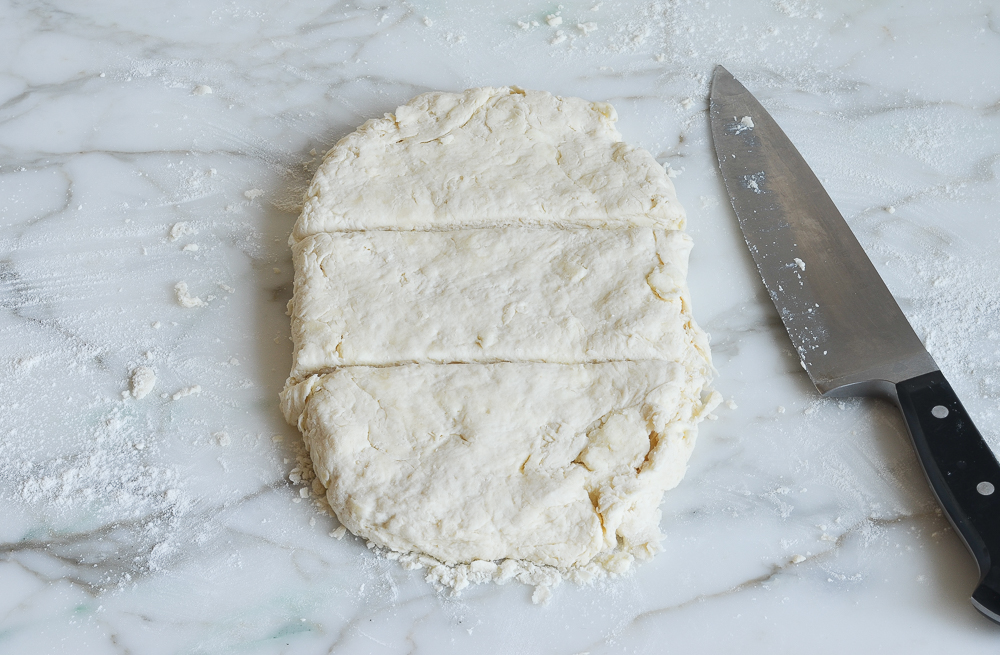
Stack the pieces on top of one another.
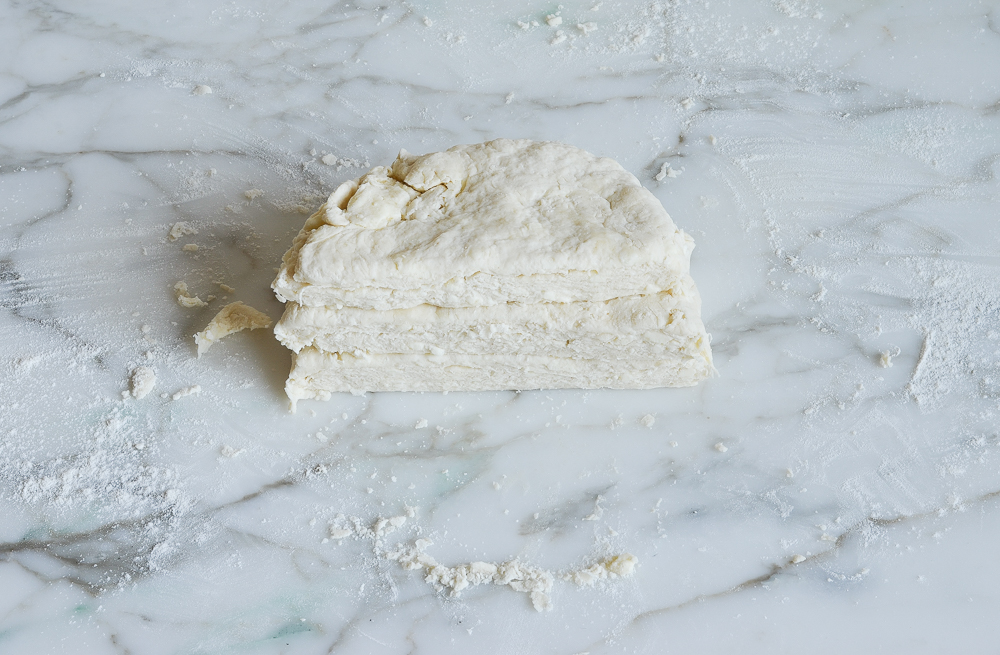
Pat out into a rectangle about 3/4 inch thick again. You can see in the photo below how this process creates layers in the dough, which makes for deliciously flaky biscuits.
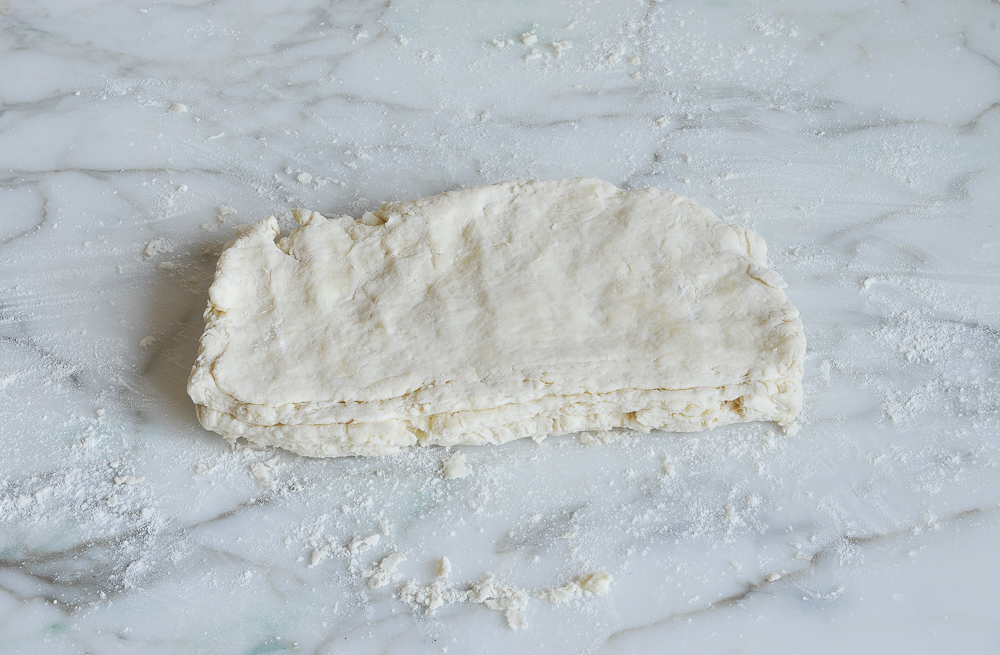
Cut the dough into thirds again.
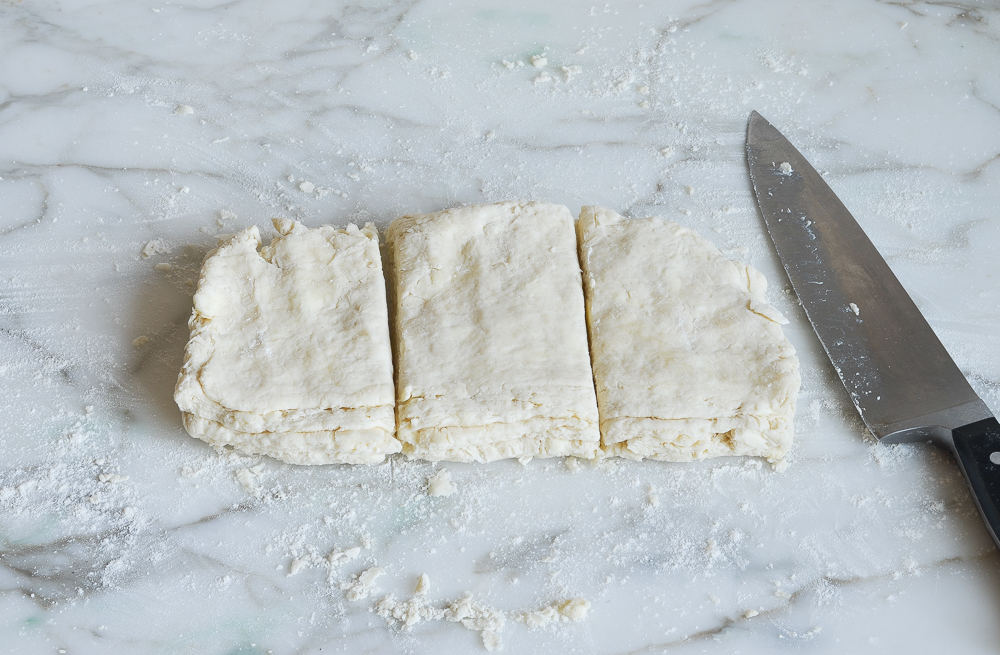
Stack the pieces up again.

Finally, pat the dough into a rectangle with a final thickness of about 3/4 inch.
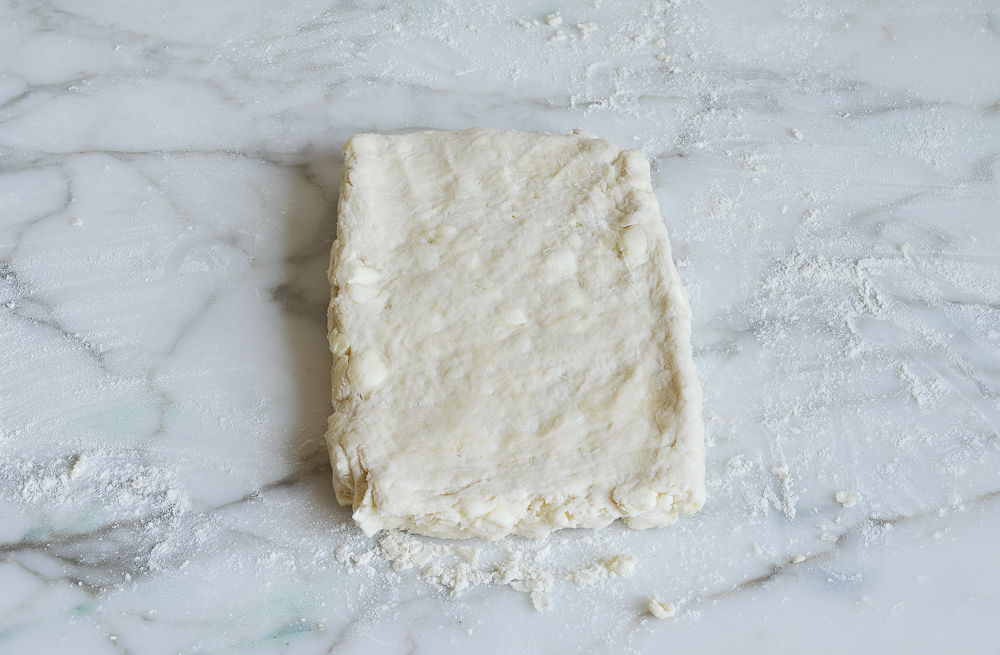
Cut the dough into 12 small squares (these biscuits are on the smaller side).
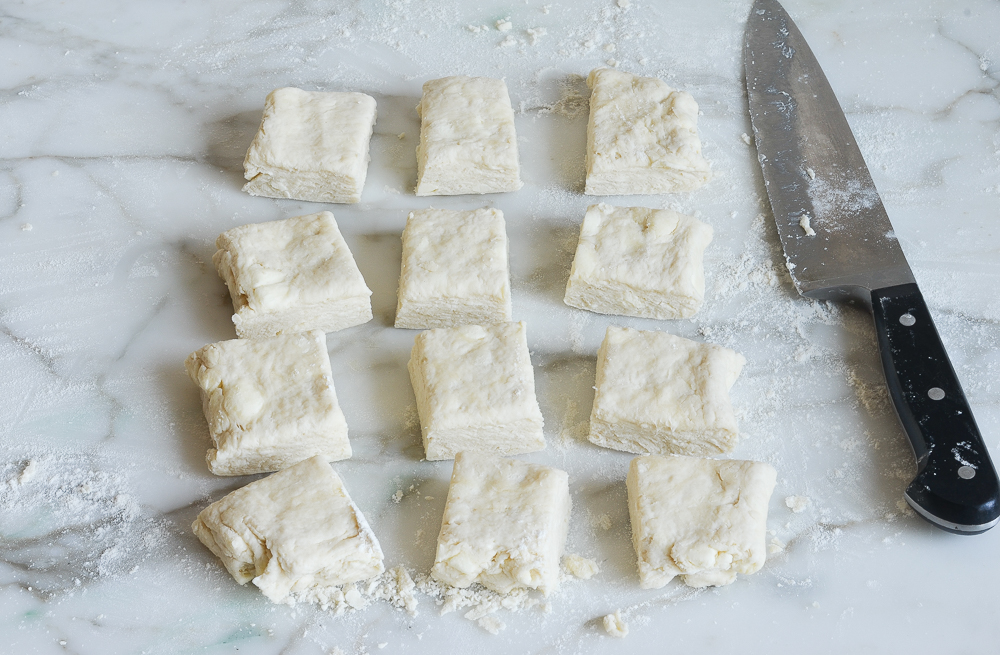
Transfer the squares to a parchment-lined baking sheet.
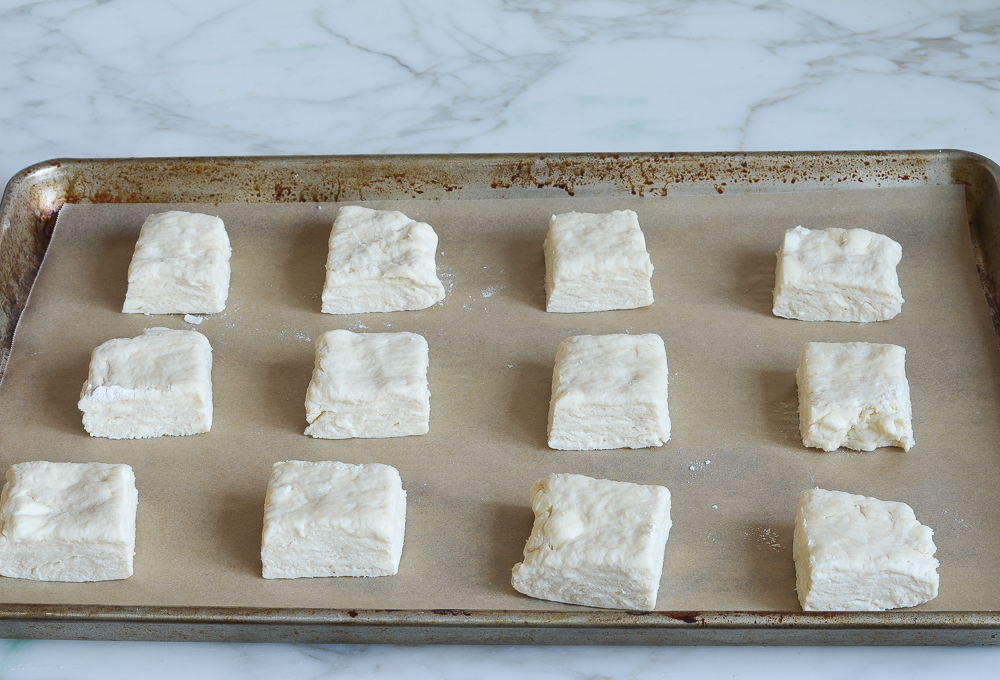
Bake for 13 to 15 minutes, until golden. The biscuits are best served warm out of the oven (though a few minutes in the oven will revive slightly stale biscuits).
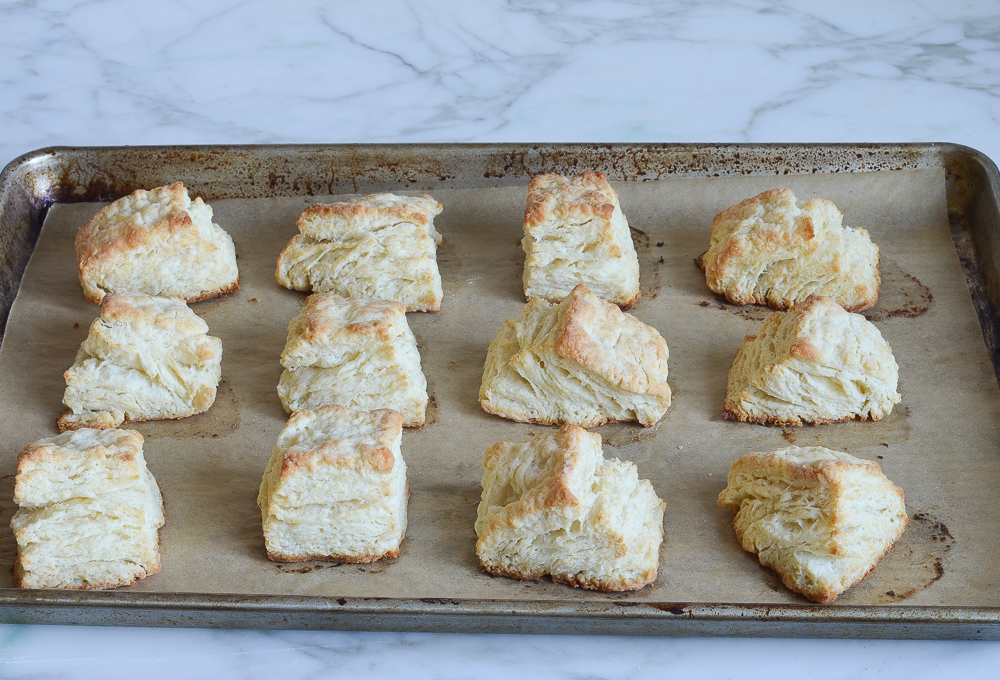
Frequently Asked Questions
Yes, before baking, the biscuits can be frozen for up to three months. Place the unbaked biscuits on a baking sheet and freeze until solid, then transfer them to a freezer-safe bag or container. When ready to bake, there’s no need to thaw but they may require a few extra minutes in the oven.
To freeze leftover biscuits, first let them cool completely at room temperature. Then, wrap each biscuit tightly in plastic wrap and place them in a freezer-safe bag or container, removing as much air as possible before sealing. The biscuits can be stored in the freezer for up to three months. When ready to eat, reheat the biscuits directly from frozen in a preheated oven at 350°F until heated through.
Buttermilk is necessary for its acidity, which reacts with the baking soda to create a light and fluffy texture. However, if you don’t have buttermilk or don’t want to purchase a whole carton, you can make a substitute by adding 2 teaspoons of lemon juice or white vinegar to a liquid measuring cup and then adding regular milk to the 3/4-cup line. Let the mixture sit for 5 to 10 minutes and it will be ready to use.
You May Also Like
Southern-Style Buttermilk Biscuits
Bring a touch of Southern warmth to your table with a basket of rich and flaky buttermilk biscuits—these feature a secret ingredient that makes them next-level tender.
Ingredients
- 2 cups all purpose flour, spooned into measuring cup and leveled-off
- 3 tablespoons cornstarch
- 1 tablespoon baking powder
- ¼ teaspoon baking soda
- 1 tablespoon sugar
- 1¼ teaspoons salt
- 10 tablespoons cold unsalted butter, cut into ½-inch chunks
- ¾ cup buttermilk, plus a bit more if necessary (see note)
Instructions
- Preheat the oven to 425ºF and set an oven rack in the middle position. Line a 13x18-inch baking sheet with parchment paper.
- In the bowl of a food processor, combine the flour, cornstarch, baking powder, baking soda, sugar and salt. Pulse a few times to mix. (Alternatively, combine the ingredients in a mixing bowl.)
- Add the butter and pulse until the mixture resembles coarse sand with a few pea-sized clumps of butter intact. (If making by hand, "cut" the butter into the dry ingredients with a pastry cutter, two knifes, or your fingertips.) Transfer the mixture to a mixing bowl.
- Add the buttermilk and stir with a spoon or rubber spatula until the dough comes together into a shaggy mass. If the dough seems too dry, add a few more tablespoons of buttermilk. Do not over-mix.
- Turn the dough out onto a lightly floured work surface. Dust the top of the dough with a bit more flour and bring together gently into a loose ball. Pat the dough into a rectangle about ¾ inch thick.
- Using a sharp knife, cut the dough into thirds. Stack the pieces on top of one another and pat out into a rectangle about ¾ in thick again, flouring the surface lightly as needed to prevent the dough from sticking.
- Cut the dough into thirds again. Stack the pieces on top of one another and pat into a rectangle with a final thickness of about ¾ inch.
- Dust the blade of a sharp knife with flour and cut the dough into twelve even squares (they will seem small). Transfer the squares to the prepared baking sheet and bake for 13 to 15 minutes, until the biscuits are lightly golden on top and a rich, golden brown on the bottom. The biscuits are best served warm out of the oven (though a few minutes in the oven will revive slightly older biscuits).
- Note: If you’d like to make your own buttermilk, see my instructions for how to make buttermilk.
- Freezer-Friendly Instructions: Before baking, the biscuits can be frozen for up to three months. Place the unbaked biscuits on a baking sheet and freeze until solid, then transfer them to a freezer-safe bag or container. When ready to bake, there's no need to thaw but they may require a few extra minutes in the oven.
Nutrition Information
Powered by ![]()
- Serving size: 1 biscuit
- Calories: 179
- Fat: 10g
- Saturated fat: 6g
- Carbohydrates: 20g
- Sugar: 2g
- Fiber: 1g
- Protein: 3g
- Sodium: 148mg
- Cholesterol: 26mg
This website is written and produced for informational purposes only. I am not a certified nutritionist and the nutritional data on this site has not been evaluated or approved by a nutritionist or the Food and Drug Administration. Nutritional information is offered as a courtesy and should not be construed as a guarantee. The data is calculated through an online nutritional calculator, Edamam.com. Although I do my best to provide accurate nutritional information, these figures should be considered estimates only. Varying factors such as product types or brands purchased, natural fluctuations in fresh produce, and the way ingredients are processed change the effective nutritional information in any given recipe. Furthermore, different online calculators provide different results depending on their own nutrition fact sources and algorithms. To obtain the most accurate nutritional information in a given recipe, you should calculate the nutritional information with the actual ingredients used in your recipe, using your preferred nutrition calculator.

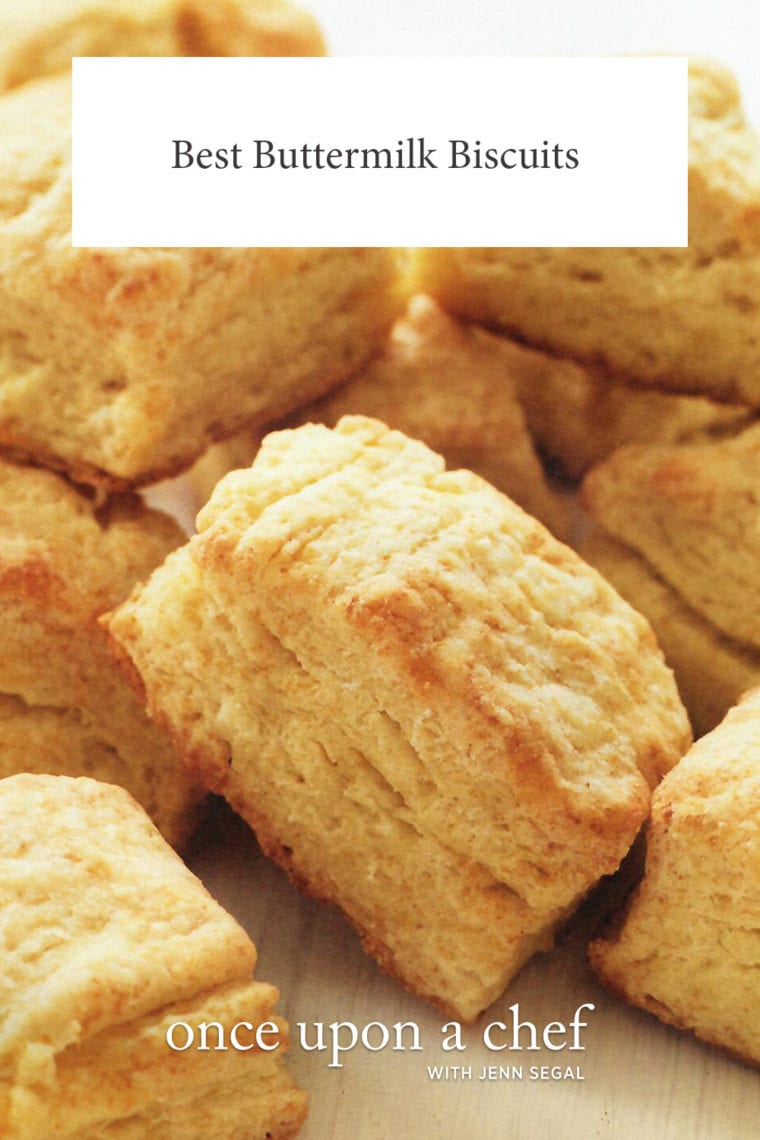
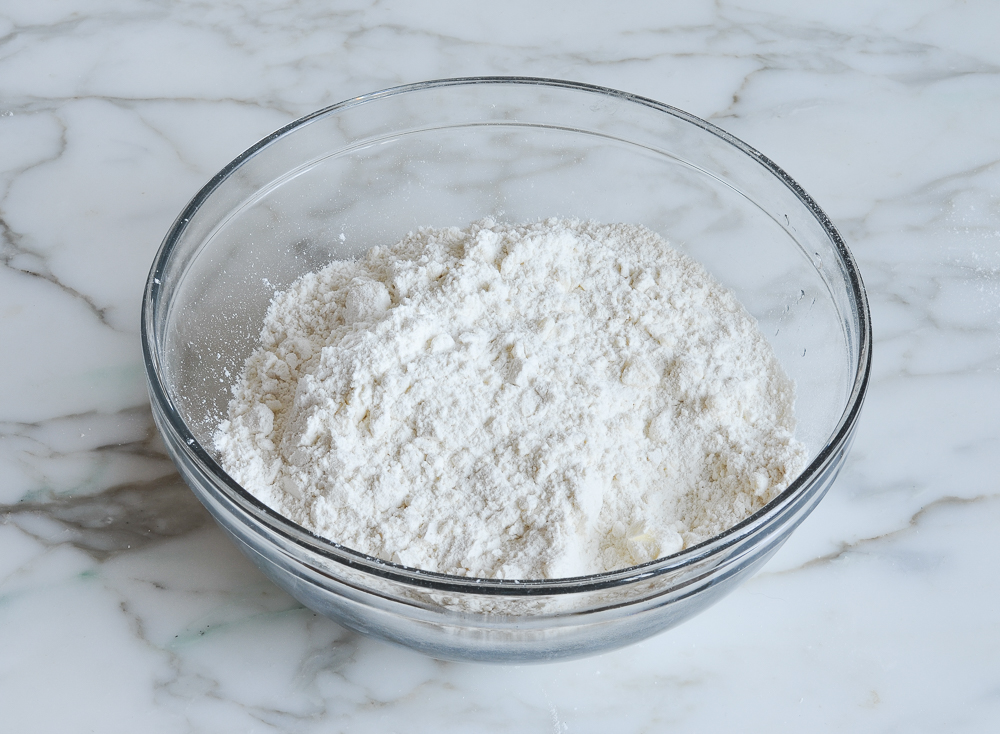
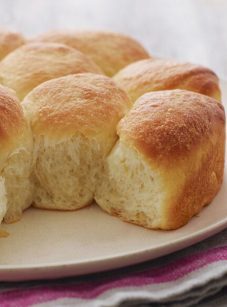
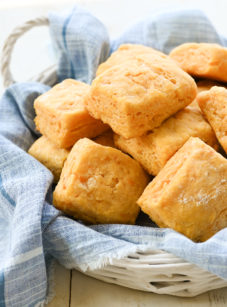
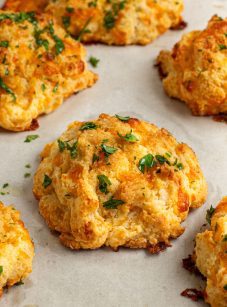
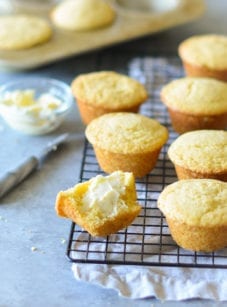
Hi Jenn 🙂
I made this recipe to test before Thanksgiving and I did it twice bc it is coming out super wet, I did it once with cream cheese and the second time just used extra butter same amount as asked for cream cheese. I am using all purpose flour as is all I can get here. Both times super wet and it doesn’t look like in your picture. I measured well with the knife technique and all. . . what am I doing wrong 🙁
Hi Sara, You probably just need to add more flour – be liberal dusting your work surface when you’re folding the dough, adding enough to make the dough easy to handle. Hope that helps!
Hi Jenn,
I live overseas and we don’t have access to cream cheese or buttermilk. Is there anything we can substitute to still get yummy biscuits??
Hi Evelyn, You can easily replace the cream cheese with more butter. As for the buttermilk, it’s easy to make your own. Simply add 2.5 teaspoons lemon juice to a liquid measuring cup. Pour milk to the 3/4 cup line. Let sit 10-15 minutes until it starts to curdle. That’s buttermilk!
Thanks for this, I’m in the same boat. I live in the UK and don’t have access to either.
Where in the U.K. do you live. Cream cheese is everywhere.look for the Philadelphia brand- they advertise it on the telly
Jenn, I always heard to add vinegar to milk to make buttermilk. You suggest lemon juice I stead?
-Sharon
Actually, either one will work! 🙂
Hi Sharon and Jenn, my Mom always used vinegar to make buttermilk and that’s what I did just now, prepping to make these biscuits!
Jenn, I also do not have a large food processor, just the smaller version; I think the flour will go everywhere! Will it work using the good old fashioned pastry cutter? My Mom also did that making certain sweet/cream cheese dough for Christmas baking.
Also, I’m making them for a book club dinner this evening to go with a chicken jambalaya that the hostess is making. Should I add any herbs or cheese or just leave them as is? I only have fresh parsley and dry herbs, plus some parmasean.
Thanks so much for your great recipes Jenn! I always enjoy making them!
Janet
Hi Janet, I’m obviously weighing in a bit too late to benefit you (I’m sorry!) but for other readers, it’s perfectly fine to use a pastry cutter or even your fingers to rub the butter/cream cheese into the flour mixture. How did the biscuits turn out?
Hi Jenn, I made the 1st round of biscuits and they did turn out a little flat but tasted good. I just wish they were thicker, like yours! I probably handled the dough too much or cut in the butter and cream cheese too much. I decided to make a 2nd batch but listened to your advice to other readers about freezing the dough then baking it straight from frozen. I added dried herbs de Province to the 2nd batch and tried to mix and handle less. I also added a little bit more butter and cream cheese. I brought the dough to the book club meeting and they did take several minutes longer to bake but tasted great with the herbs!
I managed to make them a little bit taller, but still were flat as far as biscuits go. I’m going to roll them out less next time and use a glass to cut them into rounds.
If I wanted to make these biscuits several days prior to serving, would you recommend freezing or just storing in the refrigerator until I bake them? Also, if frozen do I have to thaw prior to baking or adjust cooking times/temps? Thank you! I look forward to making these and other of your recipes for a dinner party next week!
Hi Gina, I’d recommend freezing them as they will rise more when you bake them than if you were to refrigerate the dough. You don’t need to defrost them before baking. Just pop them in the oven (they may just take a few minutes longer to bake). Hope you enjoy!
Hi Jen, what is the difference between scones and biscuits? In Australia we only refer to them as scones and biscuits are what you call cookies. Are they different because of the amount of butter in the recipe or something else?
p.s. Love your recipes..easy to follow and are delicious.
Hi Bev, In general, scones are considered more of a dessert in that they have significantly more sugar than biscuits (and are often flavored with fruits or nuts). This piece may help fill in any blanks.
Hi Again, Forgot to mention your soup will be served with Buttermilk Biscuits and a Green Salad. YUM !! Yvonne
I know they will be great…. so five stars in advance !!!
Jen Jen Jen !!! These are the best biscuits on earth!! Soo tender, just perfect !! As ALWAYS ur recipe is perfect. Ur ingredients, amounts and times are spot on!! Thank YOU for awesome recipes!!
Excellent biscuits every time! I did not alter the recipe in any way..perfect as is and now my go to recipe for tender, fluffy biscuits. Even receives two thumbs up from my husband who is from the South! Thank you for the great recipe.
Oooh, one thing I forgot to add is that I made a rhubarb syrup today from the leftover water that I squeezed from frozen rhubarb. It tastes great and I plan to pour it on the leftover biscuits with vanilla ice cream!
These were just okay for me but because of my own inept technique. I flattened the dough too thin when shaping into a rectangle and ended up with about 20 biscuits. So they didn’t rise that great. I thought they were at least flaky though.
If you really want White Lily flour, you can order it on Amazon. I do, as no store in Minnesota carries it.
Now if you want buttermilk biscuits any time, without having to run to the store for buttermilk, get SACO Buttermilk Blend. It should be in the baking section of your store, near the baking powder. It’s a yellow container, about the size of canned frosting, with red lettering. It’s a powdered version of buttermilk, and it works very well in recipes. For 3/4 cup buttermilk, add 3 tablespoons of the powder to the dry ingredients. Then just add 3/4 cup of water at the right moment.
Be sure to keep the Saco powder in the fridge between uses, as recommended. It keeps for months that way.